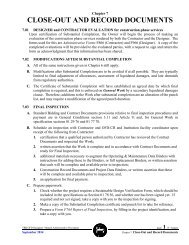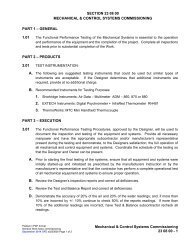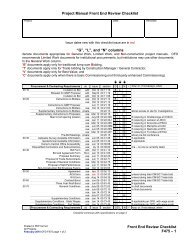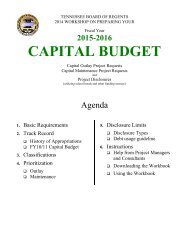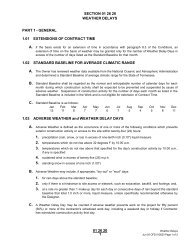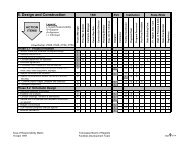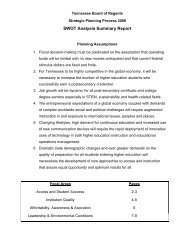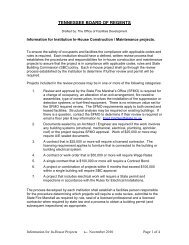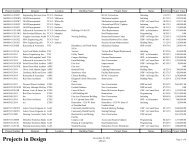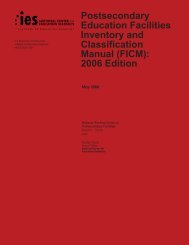SWOT Analysis Report Matrix - Final (4th Revision) - Strategic ...
SWOT Analysis Report Matrix - Final (4th Revision) - Strategic ...
SWOT Analysis Report Matrix - Final (4th Revision) - Strategic ...
You also want an ePaper? Increase the reach of your titles
YUMPU automatically turns print PDFs into web optimized ePapers that Google loves.
TBR <strong>Strategic</strong> Plan <strong>SWOT</strong> <strong>Analysis</strong>…Focal Area 4: Environmental ConditionsTheme Strengths Weaknesses Opportunities ThreatsCompetitiveEnvironmentEducational environment attractiveto out‐of‐state studentsSize of adult populations withoutdegreesStudent achievement initiative;Momentum Point CalculationTN traditionally one of the leasteducated states.Per FTE funding in lower rangecompared to SREB statesCompare TN system level data toother system level dataSome areas of the state are growingwhile others are losing population.Behind in delivery of alternatemethods of course delivery.Growing Hispanic population withcorresponding educational needsLower per capita income comparedto SREB and national indexGetting to potential adult students Increase in for‐profit schools.Low state tax rate, compared toSREB and national index, favorableto attracting industriesUncertain status of pool ofinternational students.External scholarship GPArequirementsLeadershipAndGovernanceCommunity confidence inPresidential leadershipWorking with sister institutions tocoordinate TTC graduates tocontinue educationPresence of institution leaders incommunity. Communityinvolvement and enhancement byinstitution leadership.System governance structureshould facilitate the possibility ofcoordination between universitiesand community colleges to increasegraduation rates througharticulation agreements, etc.Program and service duplicationUncertainty in future leadershipand direction of higher educationsystemIncreased bureaucracy/reportingrequirements for compliance withregulations and mandates at alllevels.Current funding formula diminishescapacity of the state to allocateresources appropriately toinstitutions with increasingenrollments or graduation rates.Funding formulas based ongraduation rates withoutconsidering particular subcategoriesof students such as nontraditional,low income, or minority studentswill undermine the larger goal ofincreasing the number of degrees.Opportunity to rethink internalgovernance and decision makingprocessesOpportunity to rethink externalgovernance and decision makingprocessesTBR institutional locations aroundthe state, nation, and worldwide.Right‐sizing the number and types ofprograms at each school—politicalwill to get this right.Commercialization of collegecampuses“Methods” based education andrigid basis for credentialing teachersmay inhibit opportunity to enlistretirees.Funding formulae of the State (i.e.THEC) that under‐fundsoccupational, technical andworkforce programs of study, bothcredit and non‐creditProducing more graduates inTennessee will almost certainlyrequire creativity and innovation atthe campus level, though this is notalways encouraged by currentnorms within the Board of Regentssystem.TBR <strong>SWOT</strong> <strong>Analysis</strong> Committee <strong>Report</strong>: <strong>4th</strong> <strong>Revision</strong> Page 6 of 7



